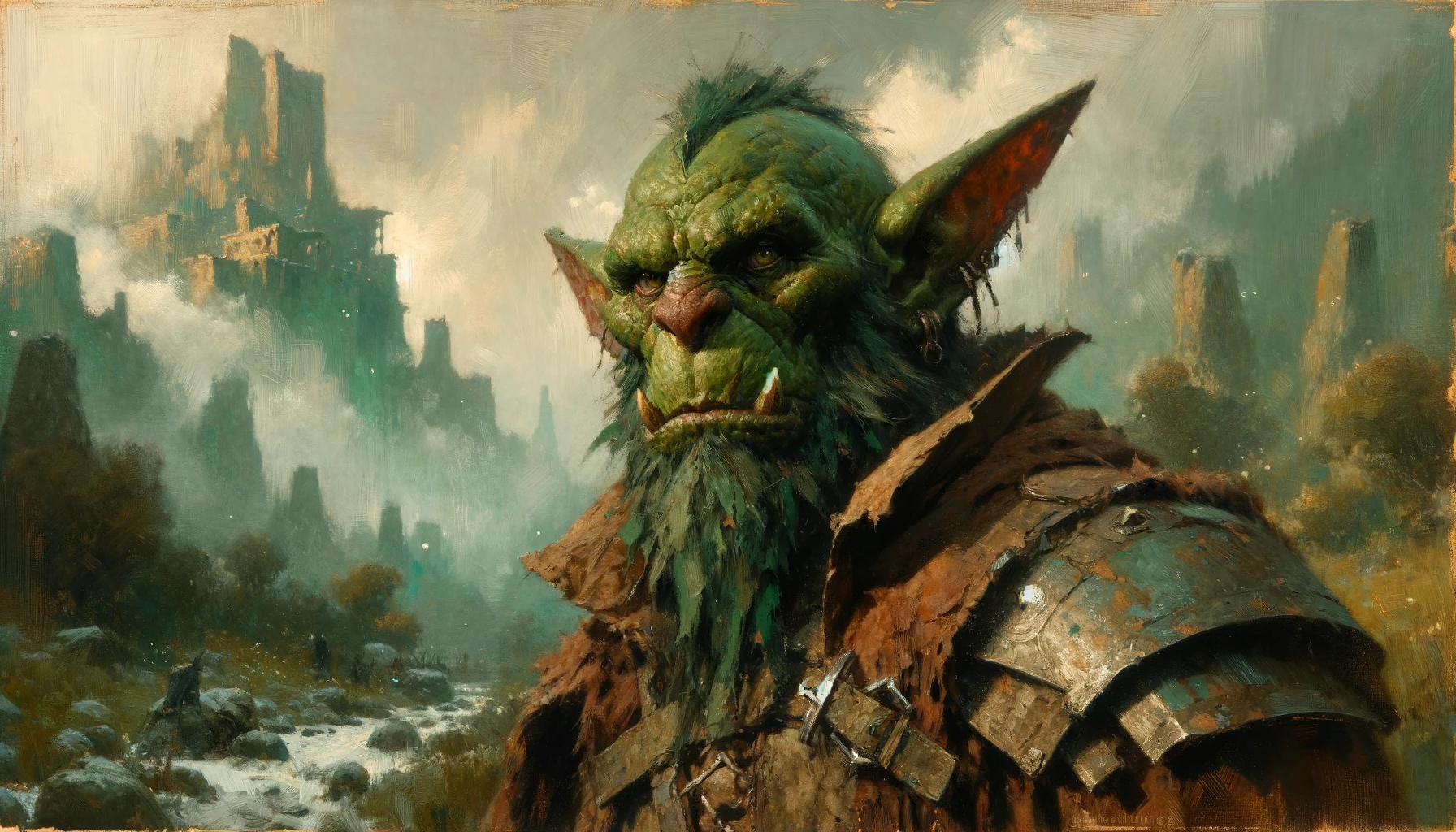Hobgoblins are disciplined and militaristic creatures, standing taller and more robust than their goblinoid kin. Renowned for their martial prowess and hierarchical societies, Hobgoblins build formidable armies and are often found in well-organized communities that resemble military encampments or fortified settlements. Their society is built on the principles of strength, discipline, and loyalty, with a rigid structure that rewards merit and achievement. Hobgoblins respect power and authority, and their culture revolves around the preparation for and conduct of warfare.
Society and Culture
Hobgoblin society is organized and hierarchical, with each individual knowing their place within the social and military structure. Their communities are often built around the needs of their legions, with civilians working to support the military efforts. Merit and achievement are highly valued, with individuals able to rise through the ranks based on their accomplishments.
Their culture emphasizes honor, discipline, and efficiency. Hobgoblins hold martial prowess in high regard, and their ceremonies and festivals often involve displays of combat skill, strategy games, and planning exercises.
Relations with Other Races
Hobgoblins are viewed with wariness and fear by many races due to their militaristic nature and expansionist ambitions. However, they are capable of forming alliances and treaties when it suits their strategic interests. Hobgoblins respect strength and discipline in others and can be loyal allies to those who earn their respect.
Hobgoblin Adventurers
Hobgoblin adventurers may leave their legions for various reasons, such as quests for personal glory, missions assigned by their commanders, or the desire to gain skills and resources to bring back to their people. In adventuring parties, Hobgoblins often take on leadership roles or act as tacticians, applying their discipline and strategic thinking to overcome challenges. Their background gives them a unique perspective on both combat and social interactions, making them valuable and intriguing companions.
Age
Hobgoblins reach adulthood by the age of 16 and live up to 70 years. They spend their youth quickly mastering the arts of war and discipline.Size
Hobgoblins are muscular and stand between 5 to 6 feet tall. They are imposing figures on the battlefield.Your size is medium.
Speed
Your base walking speed is 30 feet.
Your base swimming speed is 15 feet*.
Your base climbing speed is 15 feet*.
* calculated speed.
Languages
You can speak, read, and write: Common, Goblin.
Ability Score Increase
- Constitution: +2
- Intelligence: +1
Skill Proficiency
You have 1 of the following skills: History, Insight, Intimidation.
Race Features
Darkvision
You have superior vision in dark and dim conditions, able to see in dim light within 60 feet of you as if it were bright light, and in darkness as if it were dim light.
Martial Training
You are proficient with two martial weapons of your choice and with light armor, reflecting your rigorous combat training.
Legion's Discipline
You have advantage on saving throws against being frightened, showcasing your battlefield discipline and resistance to fear.
Strategic Mind
You gain proficiency in one of the following skills of your choice: History, Insight, or Intimidation. This represents your tactical training and understanding of military strategy.
Lore
The Stream
Credits: Game Squires

